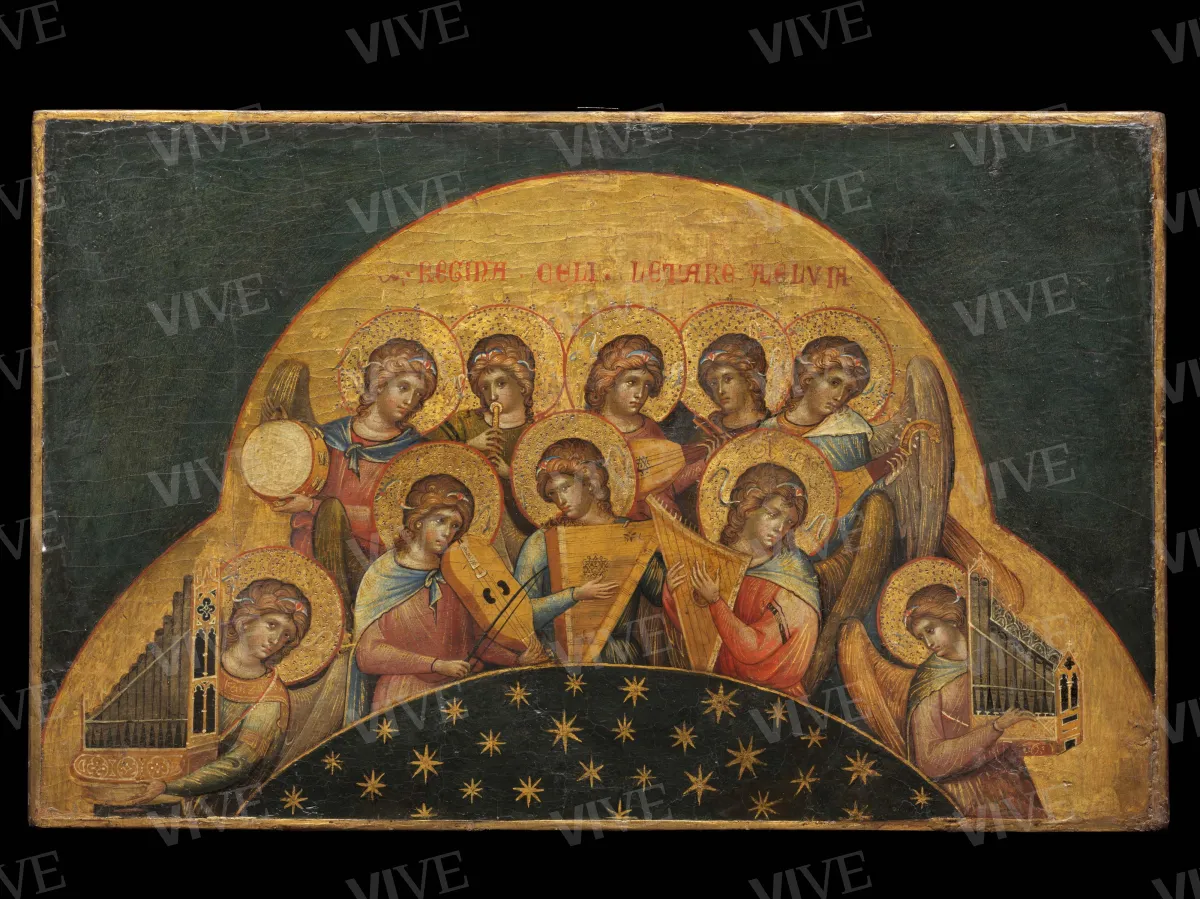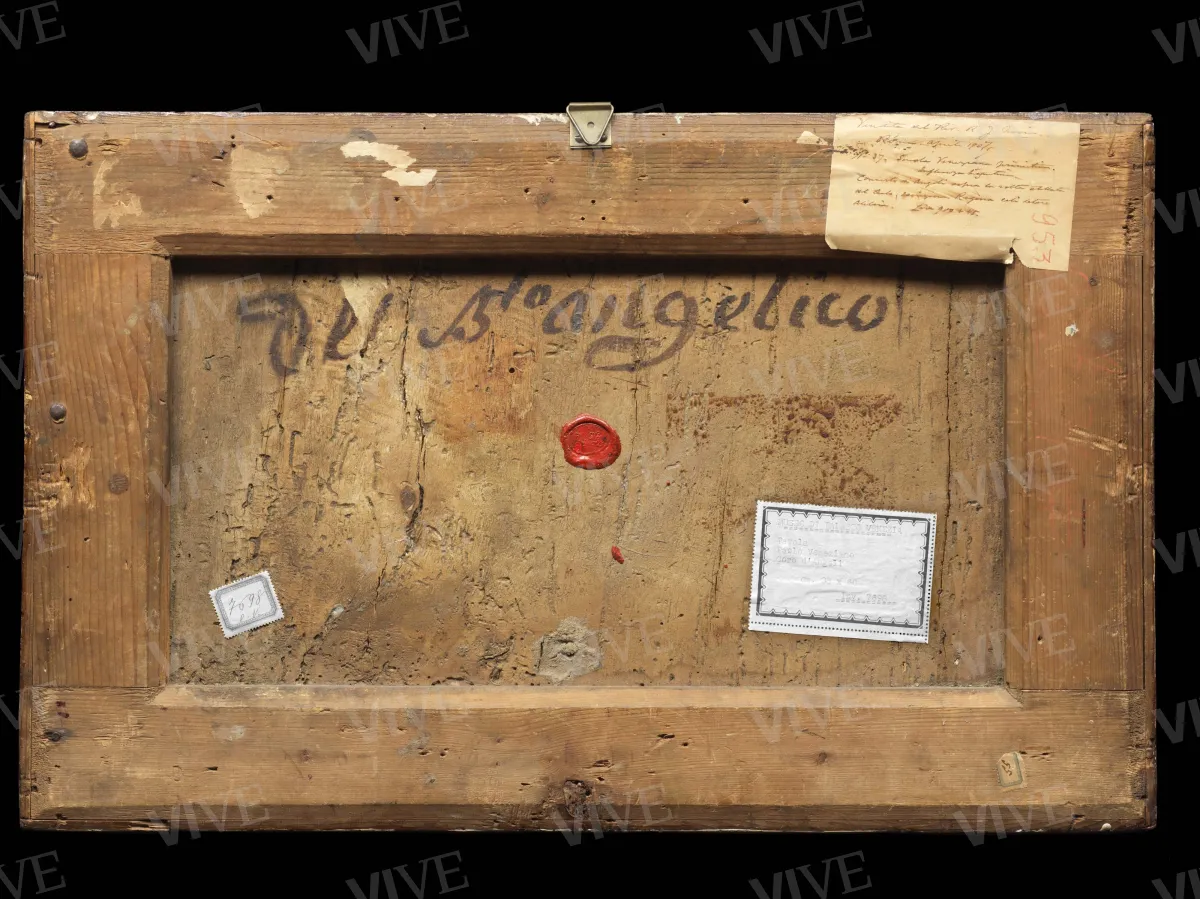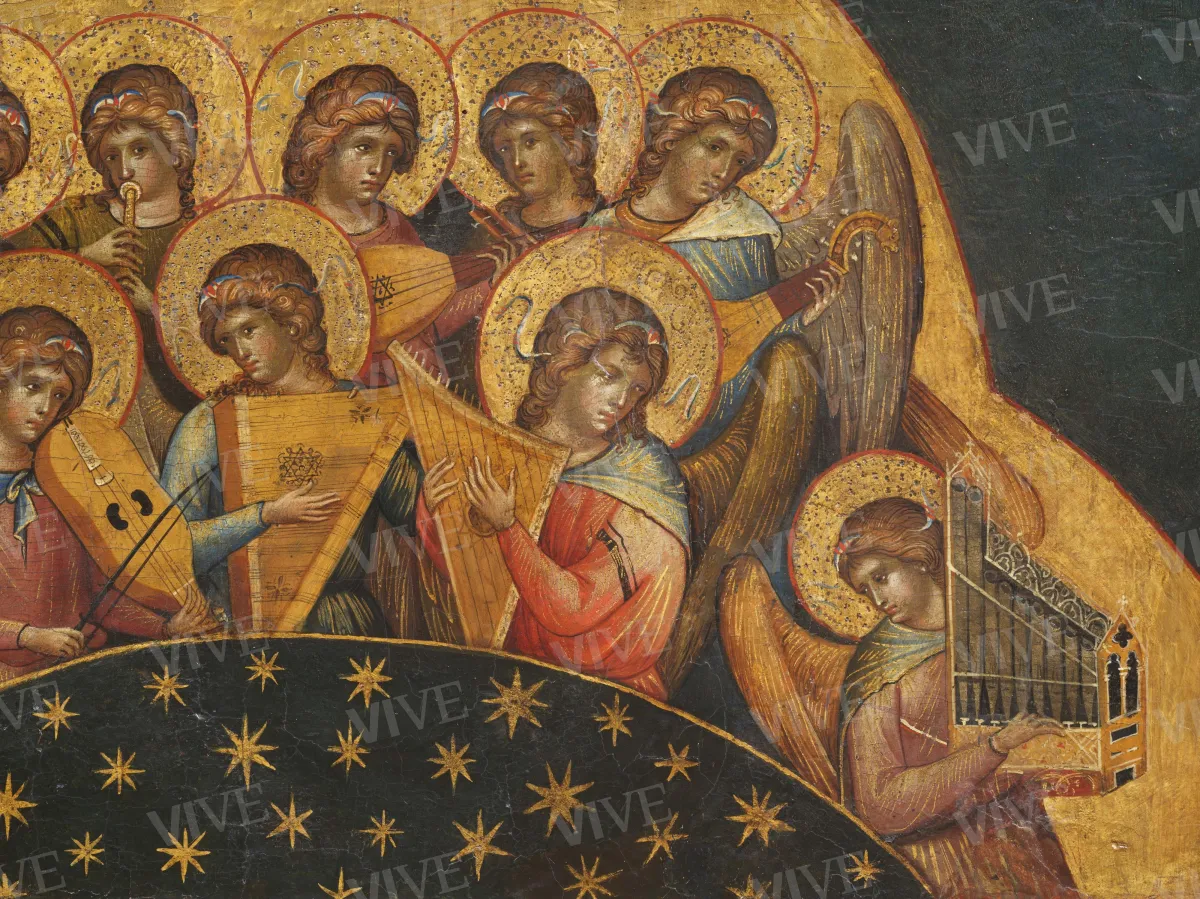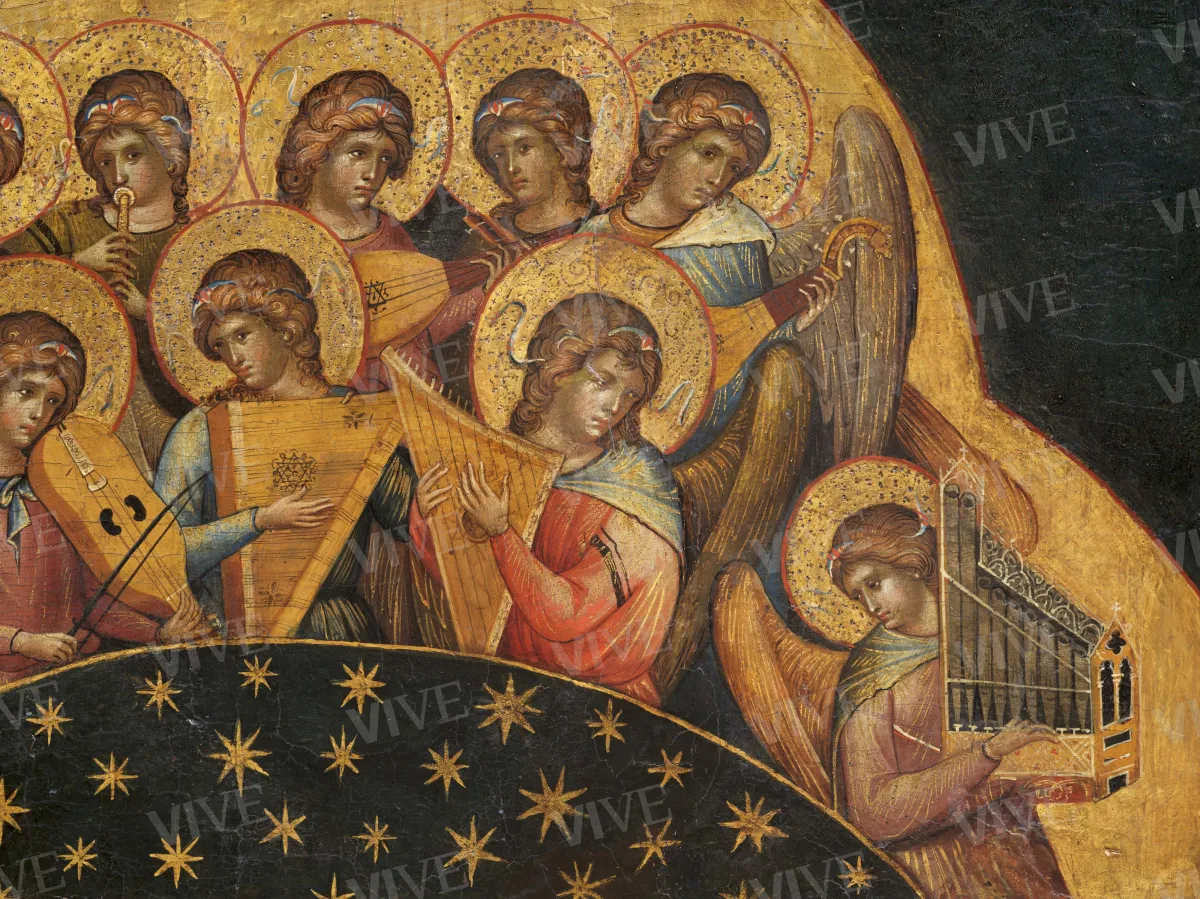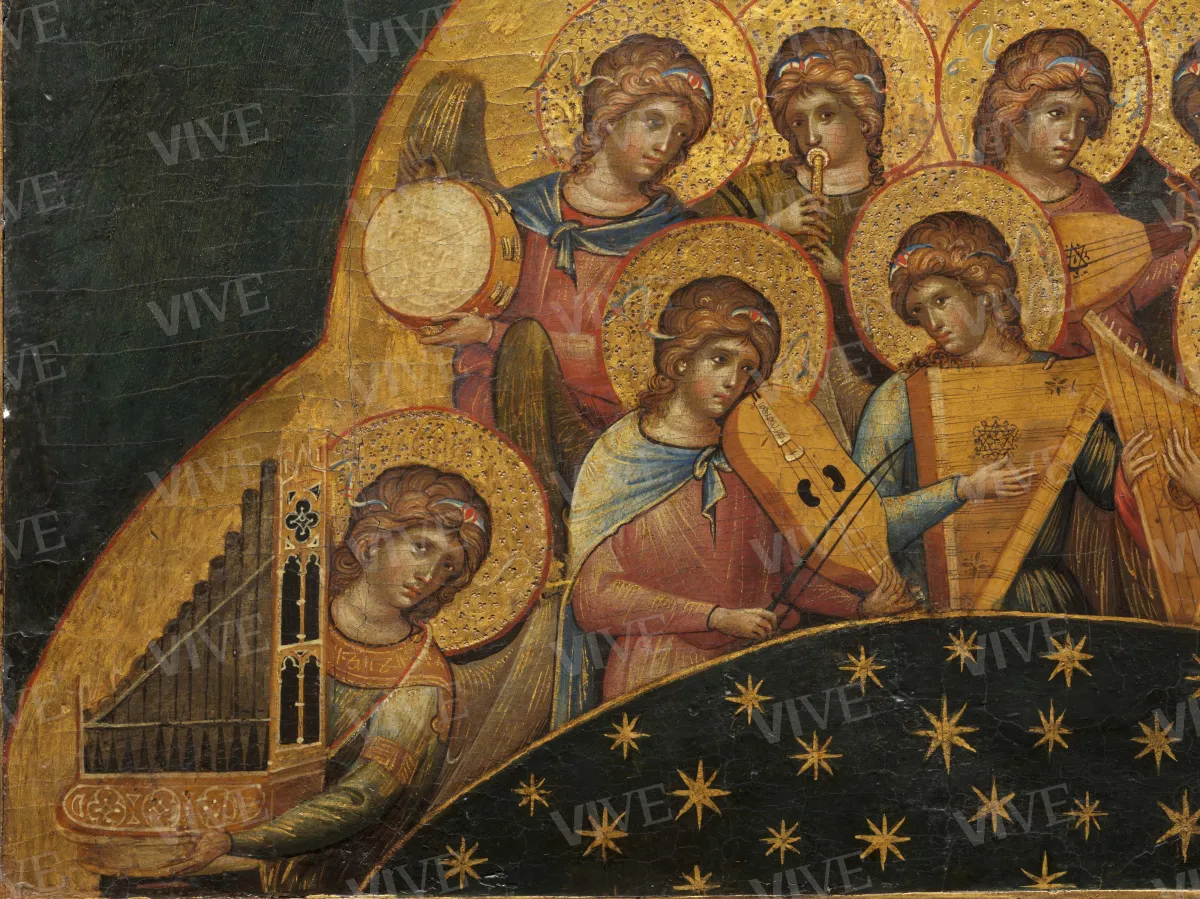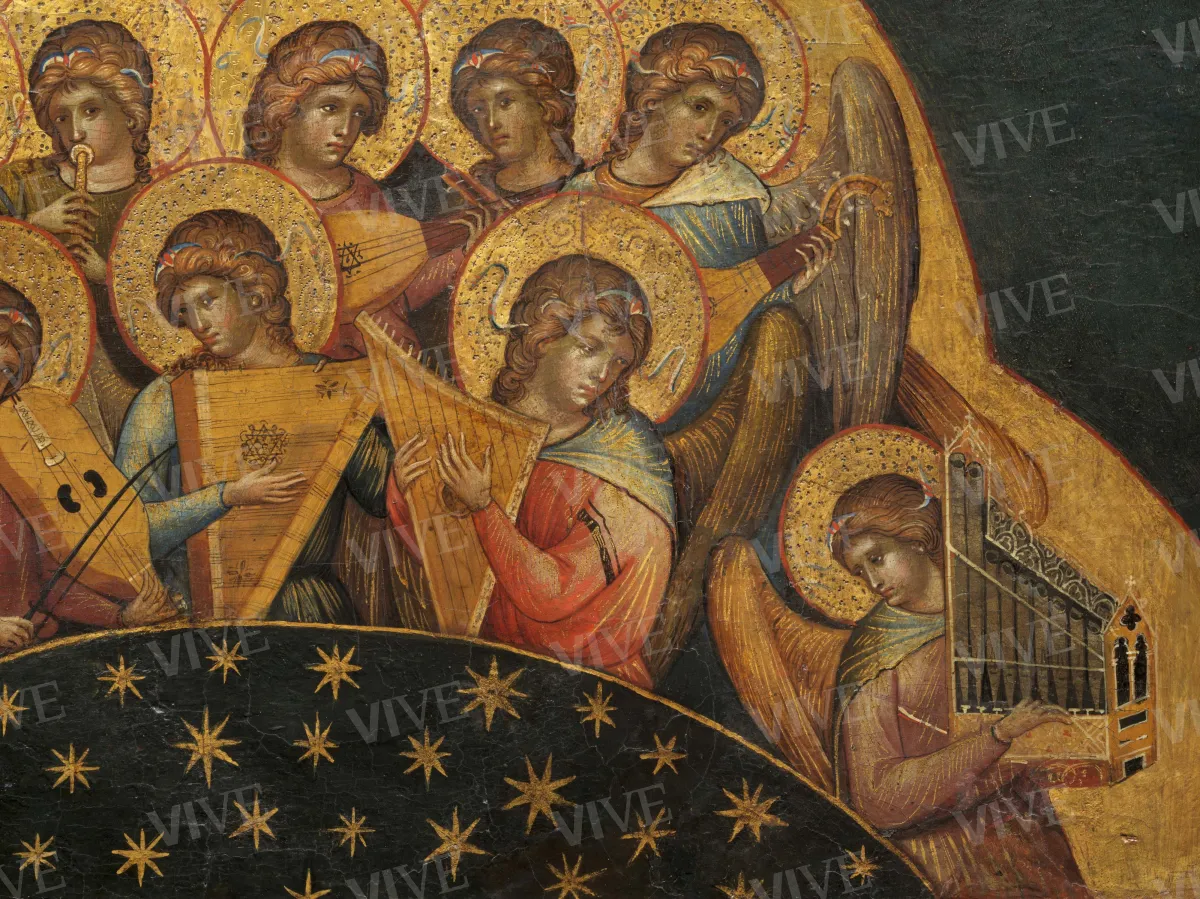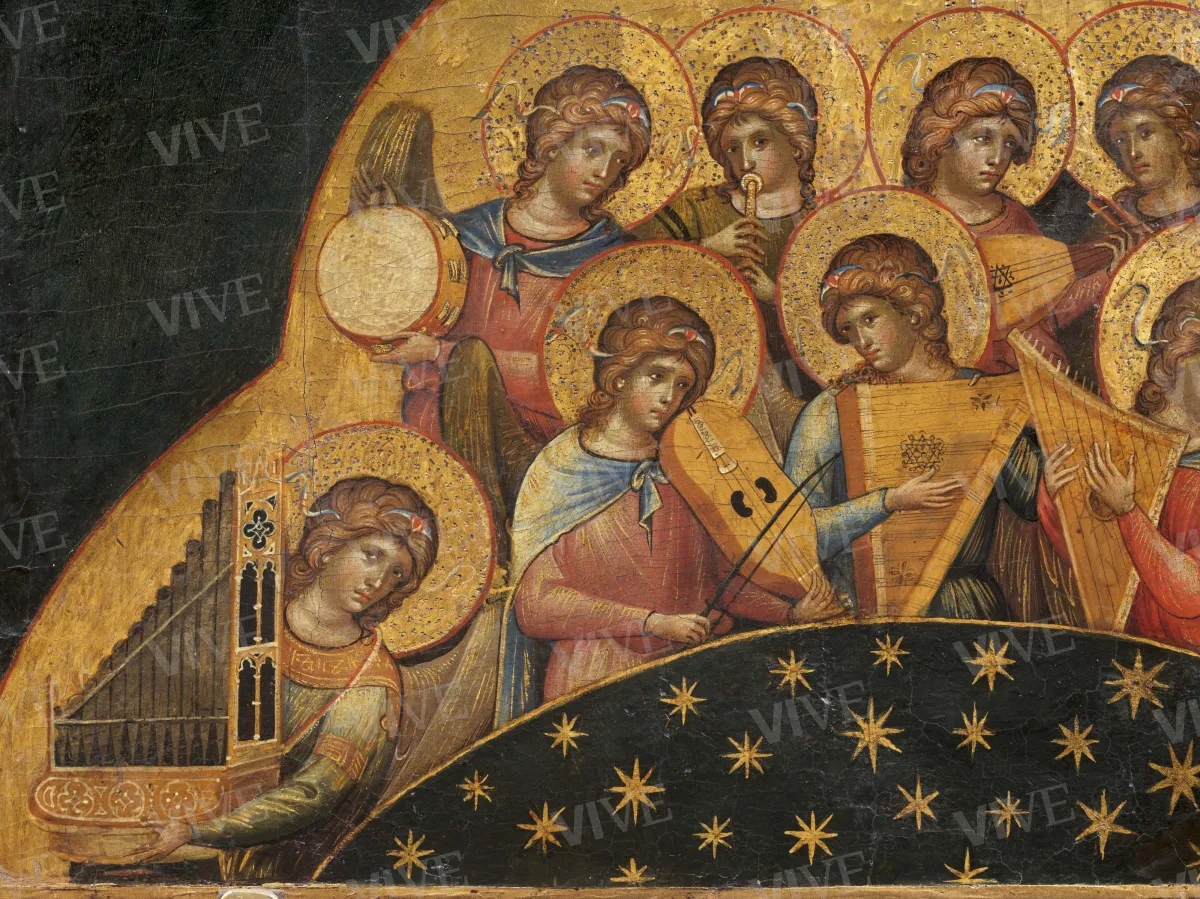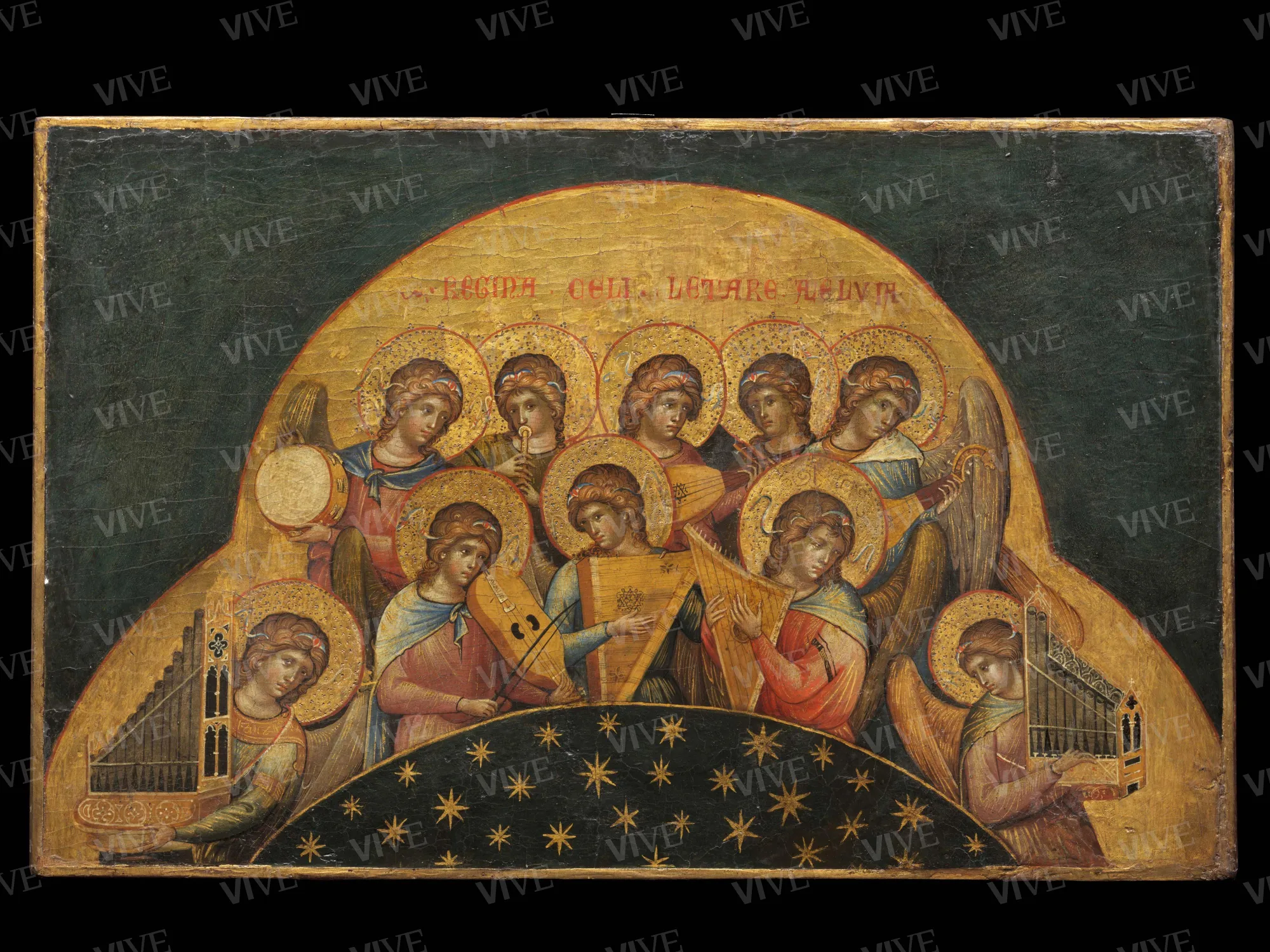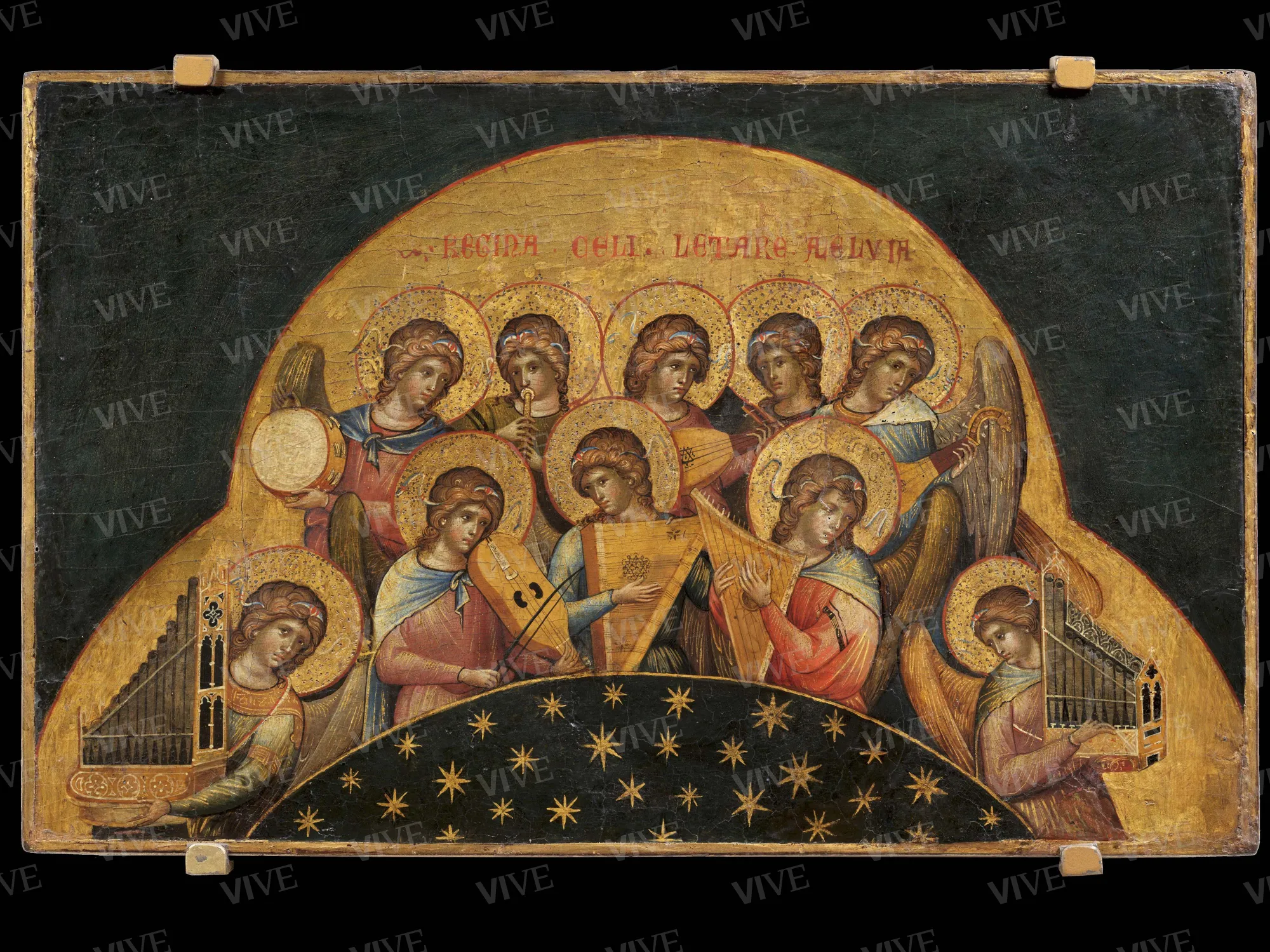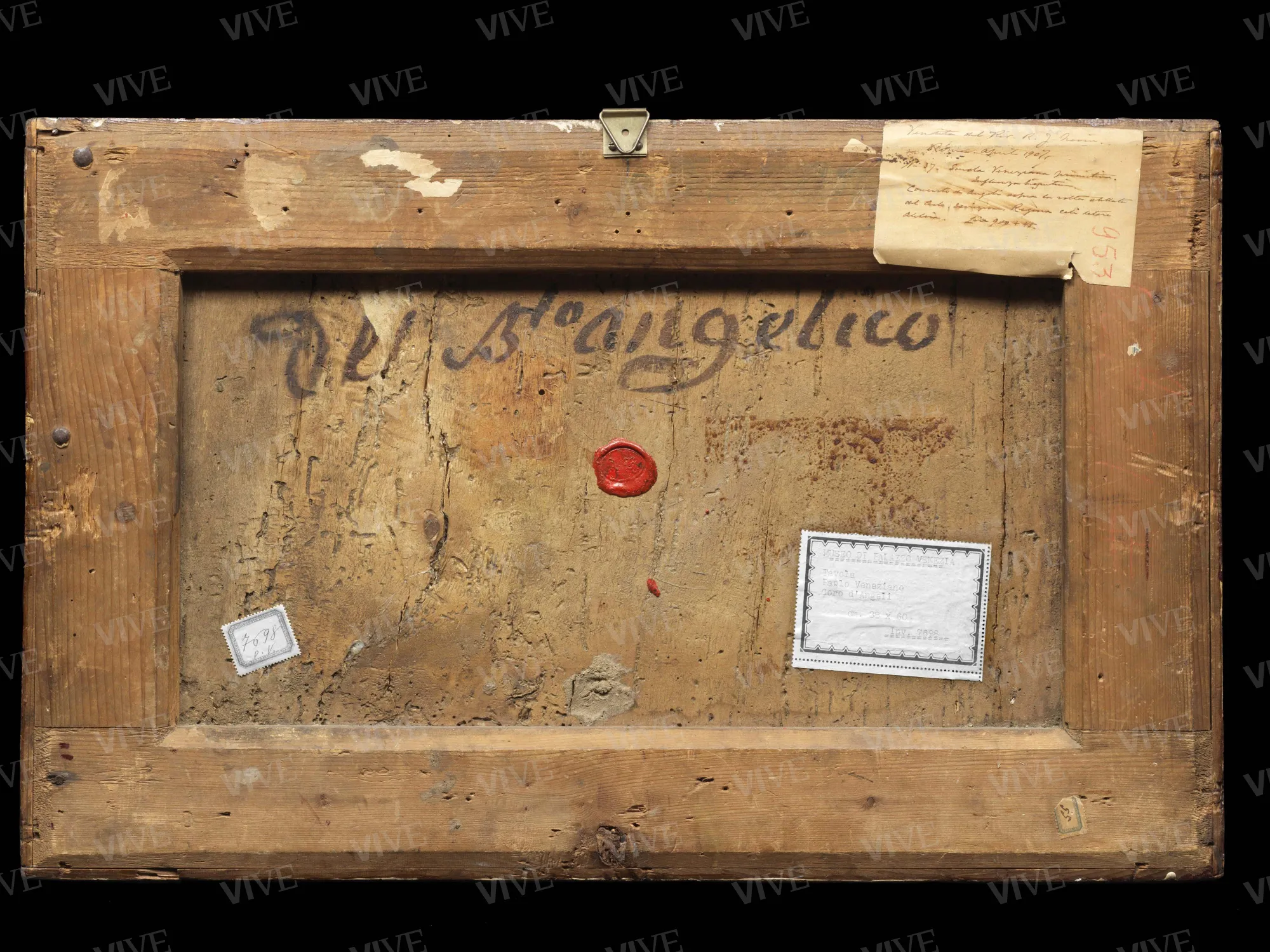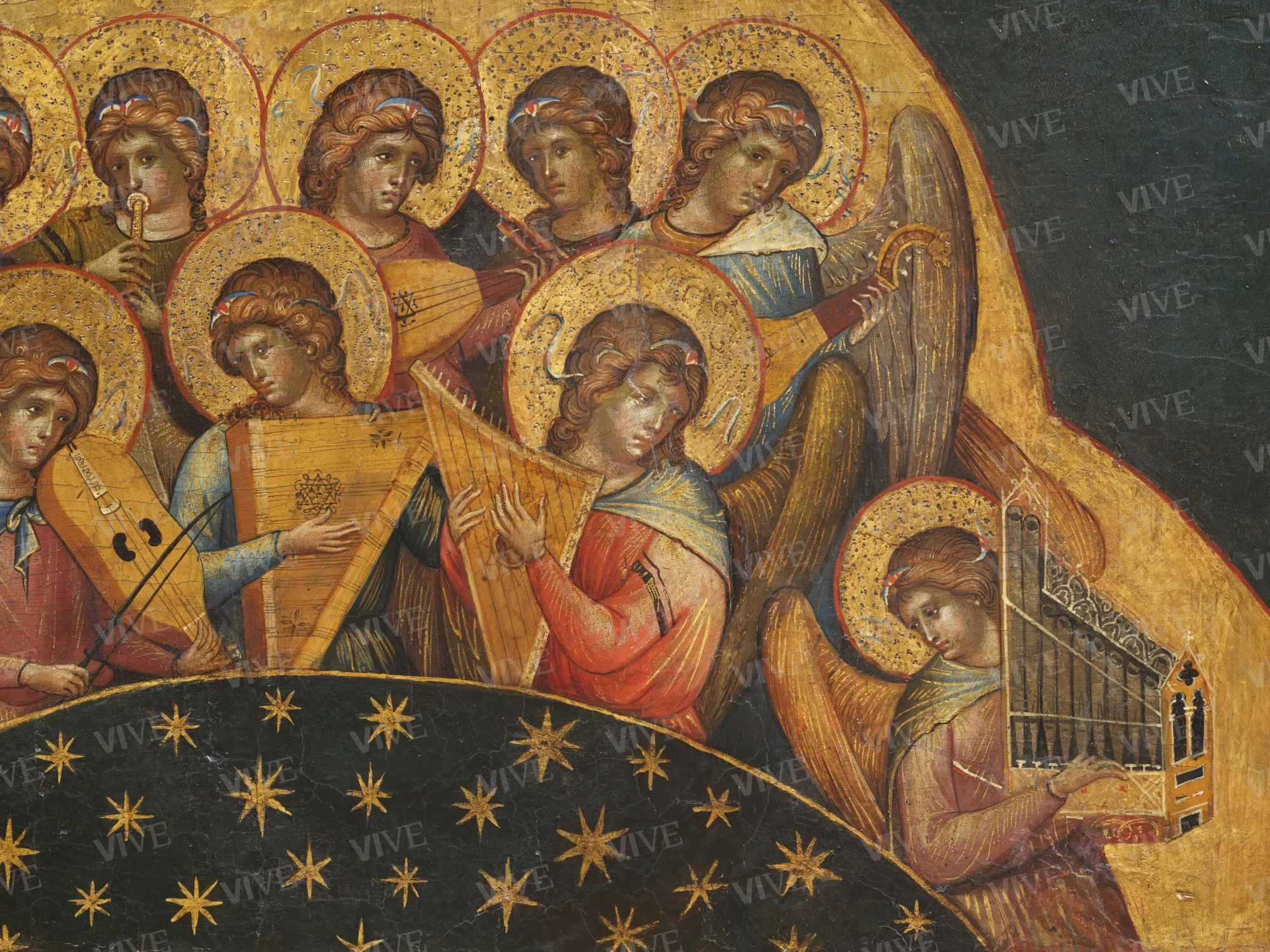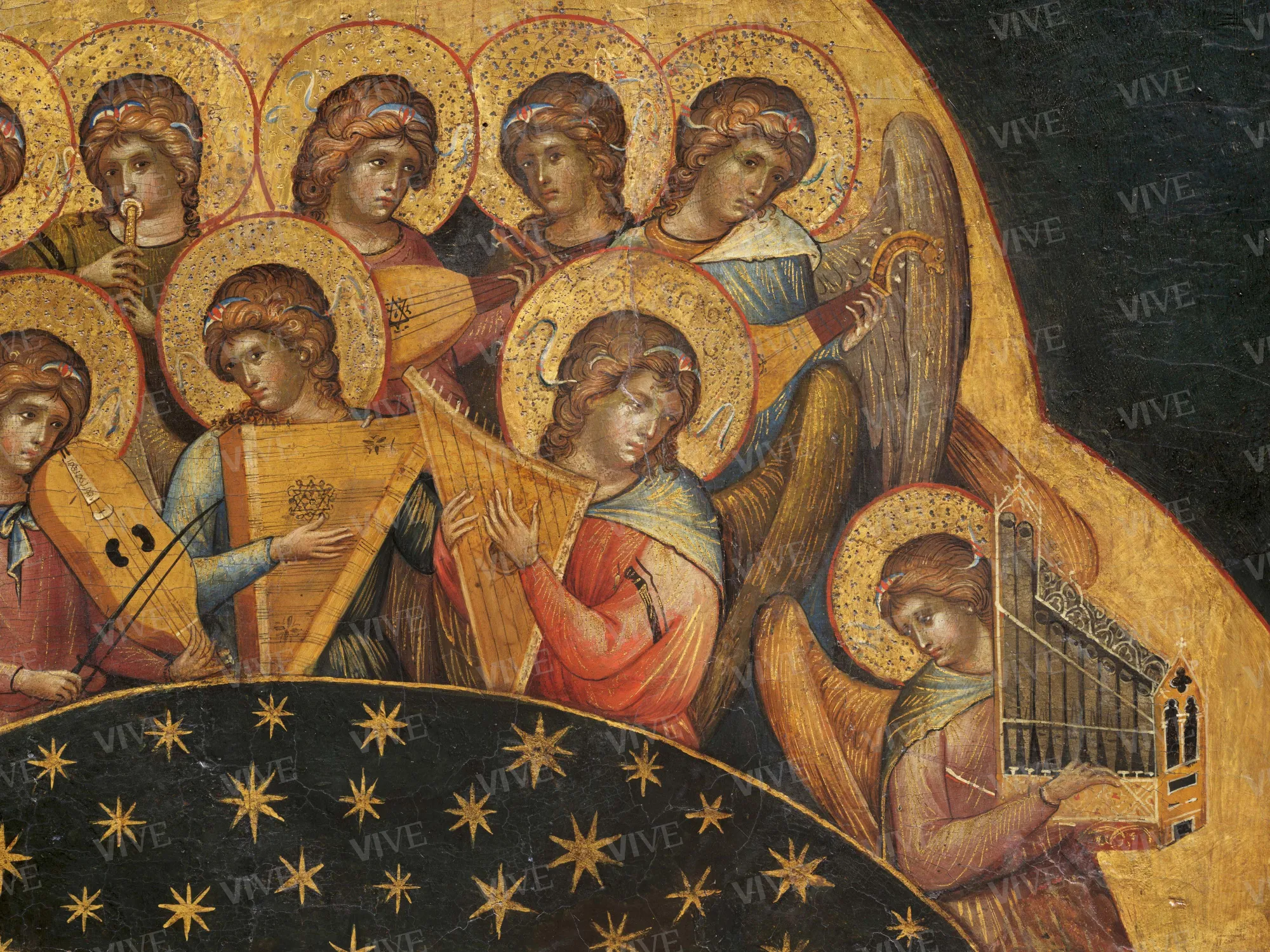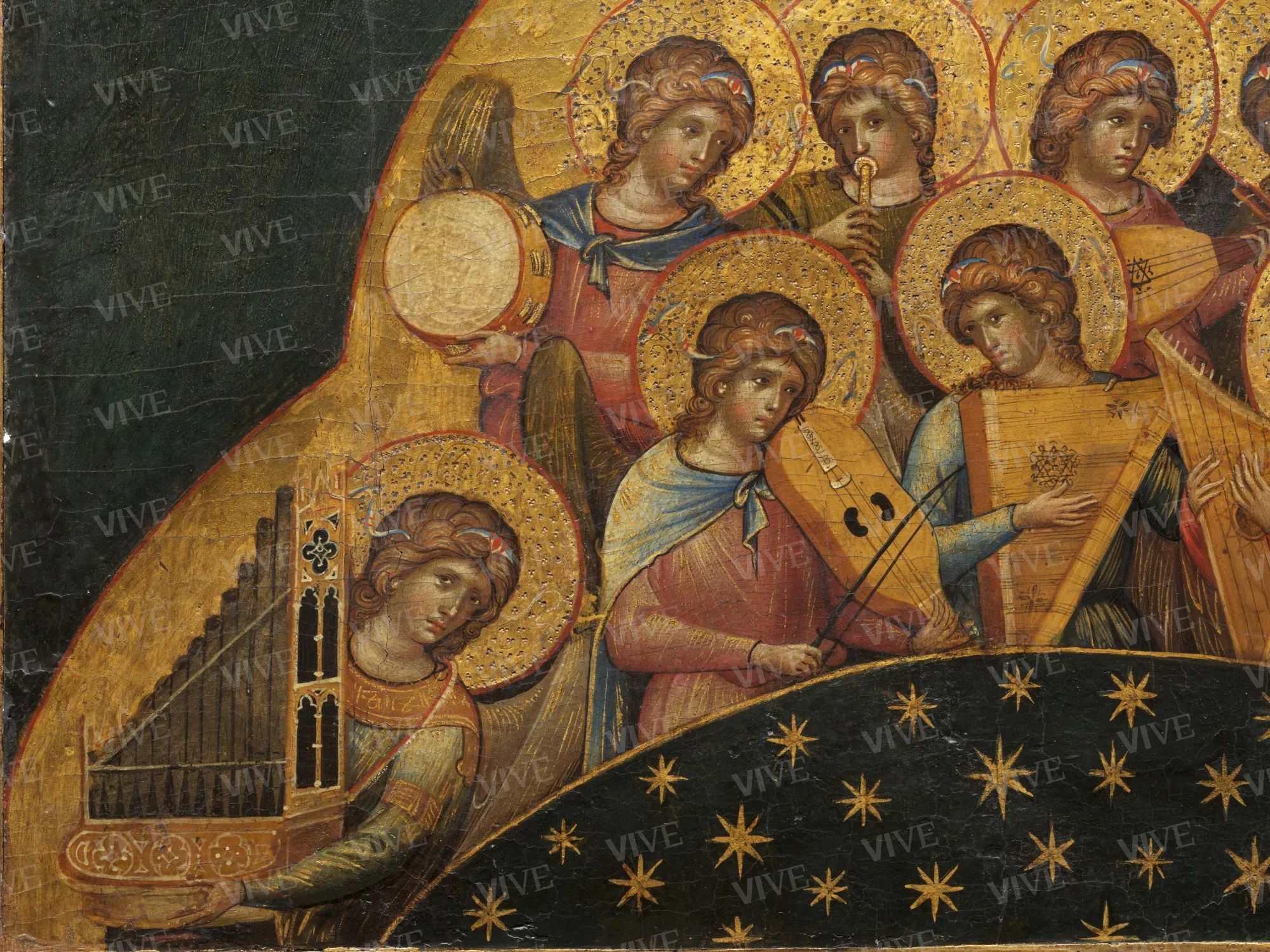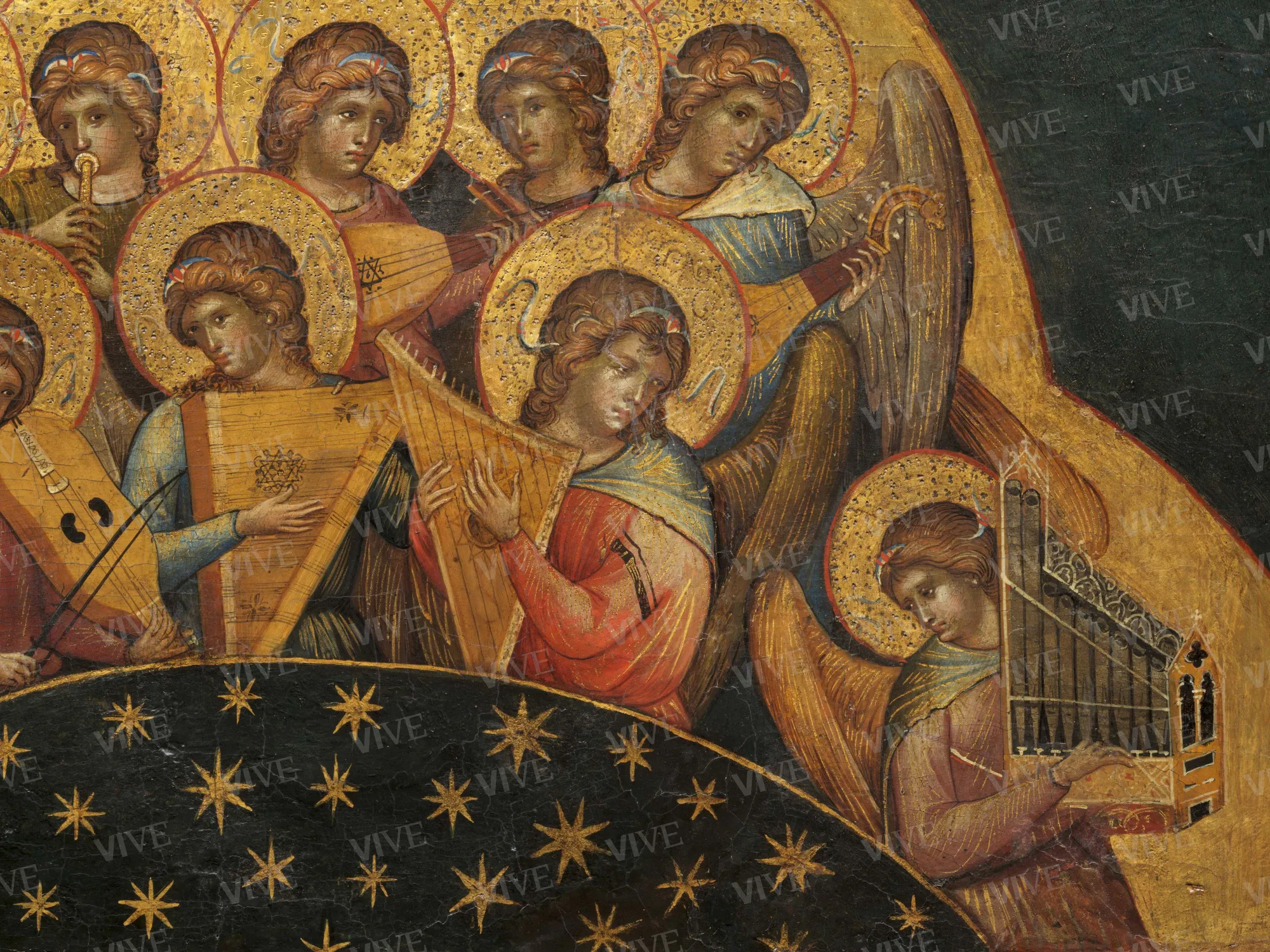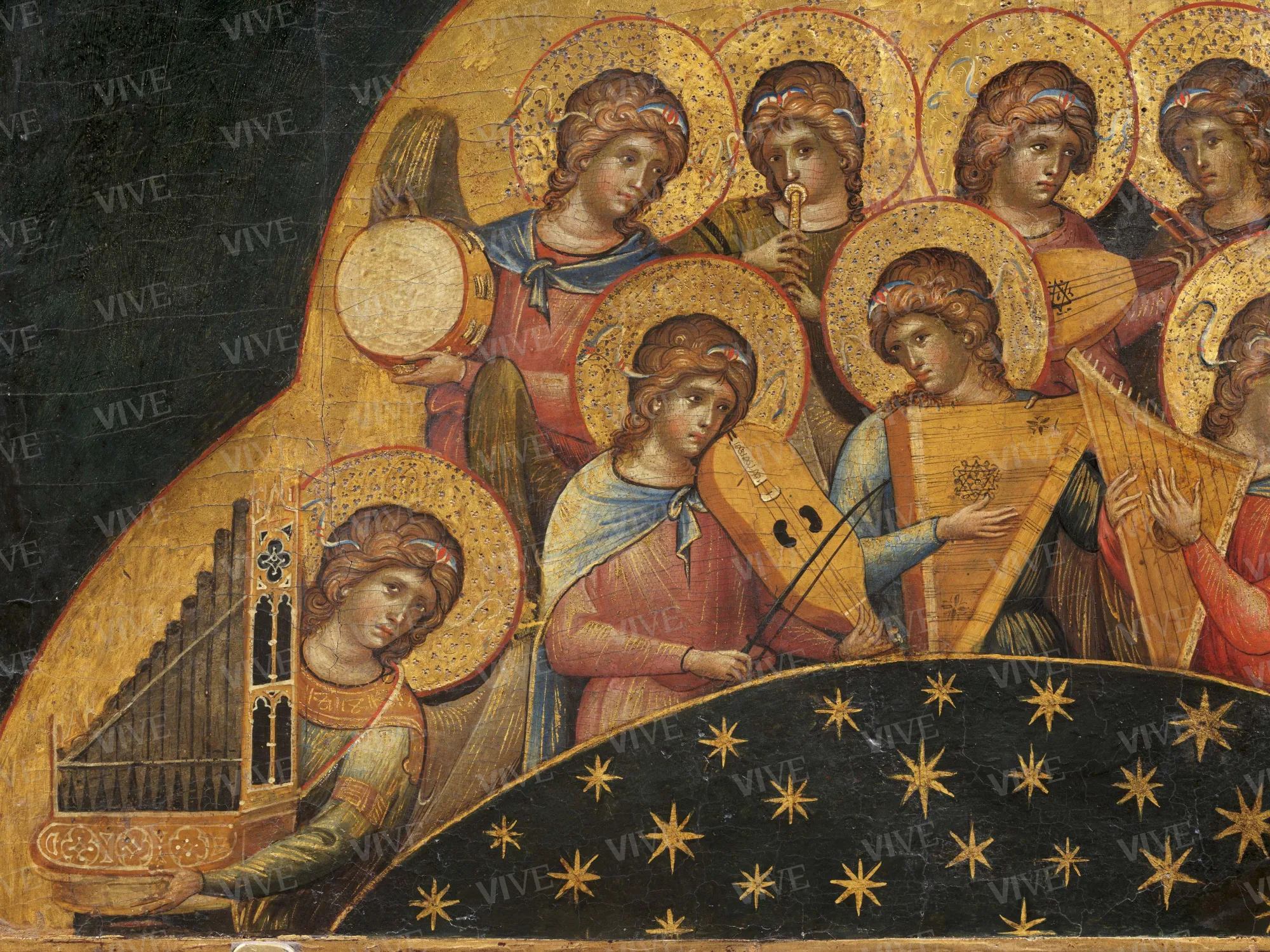Choir of angels
Paolo Veneziano Ca 1345
The work is the three-lobed upper part of a larger panel that formed the central part of a polyptych. It depicts ten angels playing music who were originally above the figure of a Madonna, as can be assumed from the rubrics on a gold background: “REGINA CELI LETARE ALELVIA.”
The work is the three-lobed upper part of a larger panel that formed the central part of a polyptych. It depicts ten angels playing music who were originally above the figure of a Madonna, as can be assumed from the rubrics on a gold background: “REGINA CELI LETARE ALELVIA.”
Details of work
Catalog entry
The painting is the final part of a much larger panel in which probably depicted a Coronation of the Virgin, as can be deduced from the inscription in Gothic capitals that reads “REGINA COELI LETARE ALLELUIA.” The panel was part of a polyptych in which the central Coronation of the Virgin was flanked by paintings of saints and holy men and women (Minardi 2012, pp. 316–320).
The surviving portion depicts a choir of ten angels intent on playing musical instruments. The figures are painted on a three-lobed gold background. At the bottom is a blue crescent moon with a sprinkling of golden stars. It is likely that this section was intended to continue below and serve as a background for the main character.
The first authoritative scholar to mention the piece was Evelyn Sandberg Vavalà (1930, p. 177), who argued that it should be attributed to Paolo Veneziano. Later scholars did not unanimously accept her proposal. Santangelo (1947, p. 29) did not exclude that the panel might be by one of his sons, most likely Giovannino, a hypothesis that was later reiterated by Rodolfo Pallucchini (1964, p. 52).
Shortly afterwards, Muraro (1969, p. 134) rightly brought the painting back into Paolo Veneziano’s pictorial production, and from this point on scholarship accepted the attribution.
Muraro (1969, p. 134) chronologically placed the work at the same time as the Madonna di Carpineta, and that is 1347. Later Pedrocco (2003, p. 198) dated it to around 1358, thus making the panel coeval with the Coronation of the Virgin in the Frick Collection, as would be indicated by similarities in style. Mauro Minardi (2017b, p. 194) and Stefano Petrocchi (2018, pp. 242-245), on the other hand, are more inclined to date it to around the middle of the fifth decade, right alongside the Carpineta Madonna.
The painting was part of R. J. Nevin’s rich collection. It is first mentioned in the catalog for the auction organized in April 1907 following the owner’s death. It later passed to the Wurts collection (Santangelo 1947, p. 29) and was acquired by the Palazzo Venezia museum thanks to a bequest from the wealthy family.
Since Nevin acquired many paintings by drawing from the rich collections of families from the Marches (Minardi 2017a, pp. 180-181), it seems likely that the panel in question also came from this region, where, in fact, Paolo Veneziano sent his works to the cities of Pesaro and San Severino Marche (Minardi 2017b, p. 194).
Valentina Fraticelli
Entry published on 12 February 2025
State of conservation
Following restoration in 2018, the conservation condition of the painting is optimal.
Restorations and analyses
2018 (restoration undertaken by L’Officina Consorzio with the collaboration of Sabrina Menniti under the direction of Stefano Petrocchi).
Inscriptions
"REGINA CELI. LETARE ALELVIA" (inscription in red capital letters on a gold background placed in the center, at the top of the panel, above the heads of the angels); "by B[ea]to Angelico" (Inscription in the verso of the panel).
Provenance
Rome, Nevin Collection (until 1907);
Rome, Tower-Wurts Collection (until 1933);
Rome, Museo Nazionale del Palazzo di Venezia (1933).
Exhibition history
Illegio di Tolmezzo, Casa delle Esposizioni, Angeli. Volti dell’invisibile, April 24–October 3, 2010;
Padua, Palazzo del Monte di Pietà, Guariento e la Padova carrarese, April 16–July 31, 2011, no. 19;
Rome, Palazzo Venezia, Gallerie Sacconi al Vittoriano, Voglia d'Italia. Il collezionismo internazionale nella Roma del Vittoriano, December 7, 2017–March 4, 2018, no. 3.2;
Turin, Reggia di Venaria, Restituzioni. Tesori d’arte restaurati, March 28–September 16, 2018, no. 22.
References
Sandberg Vavalà Evelyn, Maestro Paolo Veneziano, in «The Burlington Magazine», 331, 1930, pp. 160-183 (p. 177);
Museo di Palazzo Venezia. Catalogo. 1. Dipinti, Santangelo Antonino (a cura di), Roma 1947, p. 29;
Pallucchini Rodolfo, La pittura veneziana del Trecento, Venezia-Roma 1964, p. 52;
Muraro Michelangelo, Paolo da Venezia, Milano 1969, p. 134;
Pedrocco Filippo, Paolo Veneziano, Milano 2003, p. 198;
Pedrocco Filippo, in Banzato Dino, Flores D’Arcais Francesca, Spiazzi Anna Maria (a cura di), Guariento e la Padova carrarese, catalogo della mostra (Padova, Palazzo del Monte di Pietà, 16 aprile-31 luglio 2011), Venezia 2011, pp. 164-165, n. 19;
Minardi Mauro, Studi sulla collezione Nevin: i dipinti veneti del XIV e XV secolo, in «Saggi e Memorie di Storia dell’Arte», 36, 2012, pp. 315-350 (pp. 316-320);
Minardi Mauro, Il reverendo Robert J. Nevin: la sua chiesa e la collezione di dipinti antichi, in Pellegrini Emanuele (a cura di), Voglia d’Italia. Il collezionismo internazionale nella Roma del Vittoriano, catalogo della mostra (Roma, Palazzo Venezia, Gallerie Sacconi al Vittoriano, 7 dicembre 2017-4 marzo 2018), Napoli 2017, pp. 177-187 (Minardi 2017a);
Minardi Mauro, in Pellegrini Emanuele (a cura di), Voglia d’Italia. Il collezionismo internazionale nella Roma del Vittoriano, catalogo della mostra (Roma, Palazzo Venezia, Gallerie Sacconi al Vittoriano, 7 dicembre 2017-4 marzo 2018), Napoli 2017, p. 194, n. 3.2 (Minardi 2017b);
Petrocchi Stefano, in Restituzioni. Tesori d’arte restaurati, catalogo della mostra (Torino, Reggia di Venaria, 28 marzo-16 settembre 2018), Venezia 2018, pp. 242-245, n. 22.

